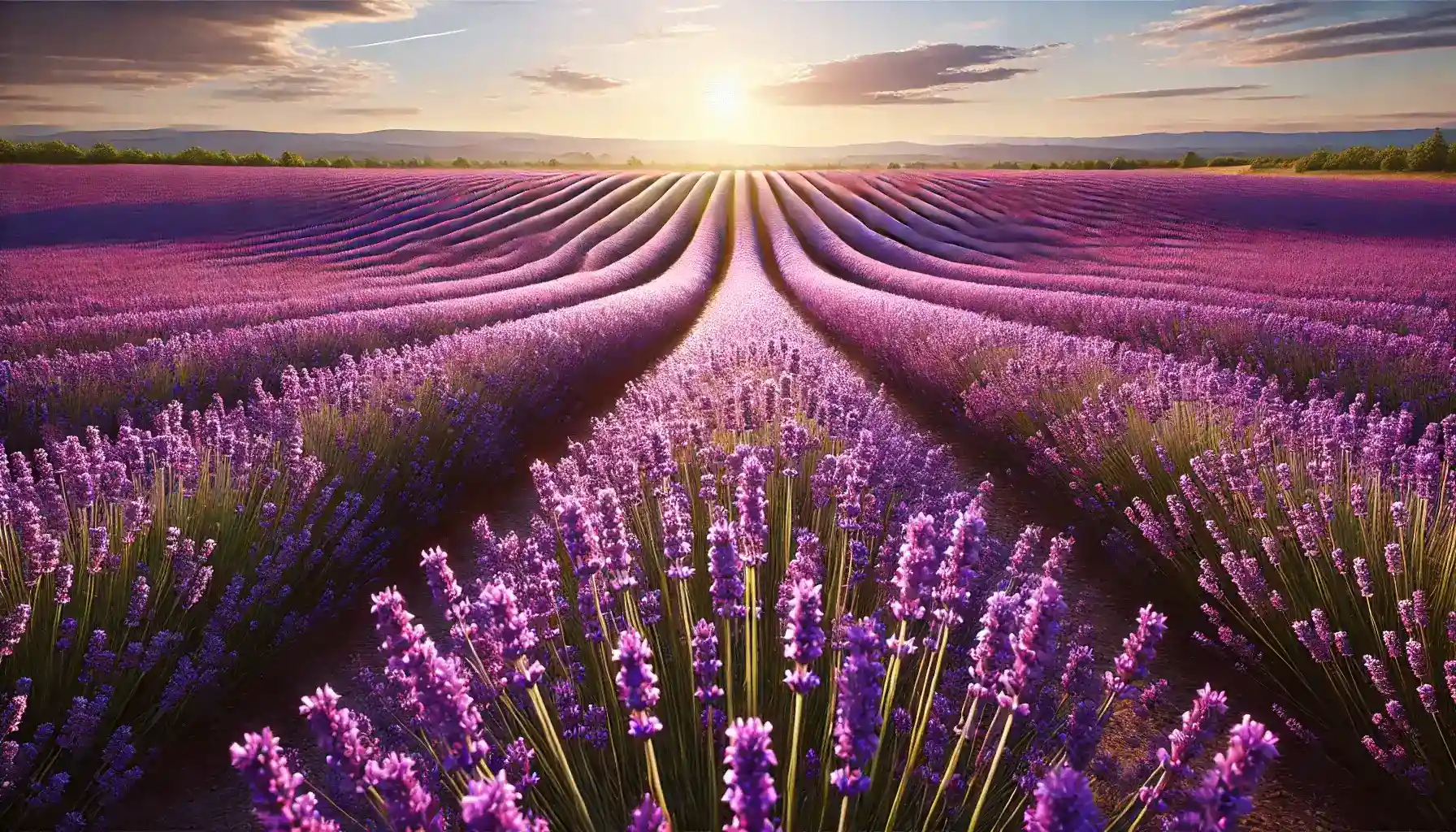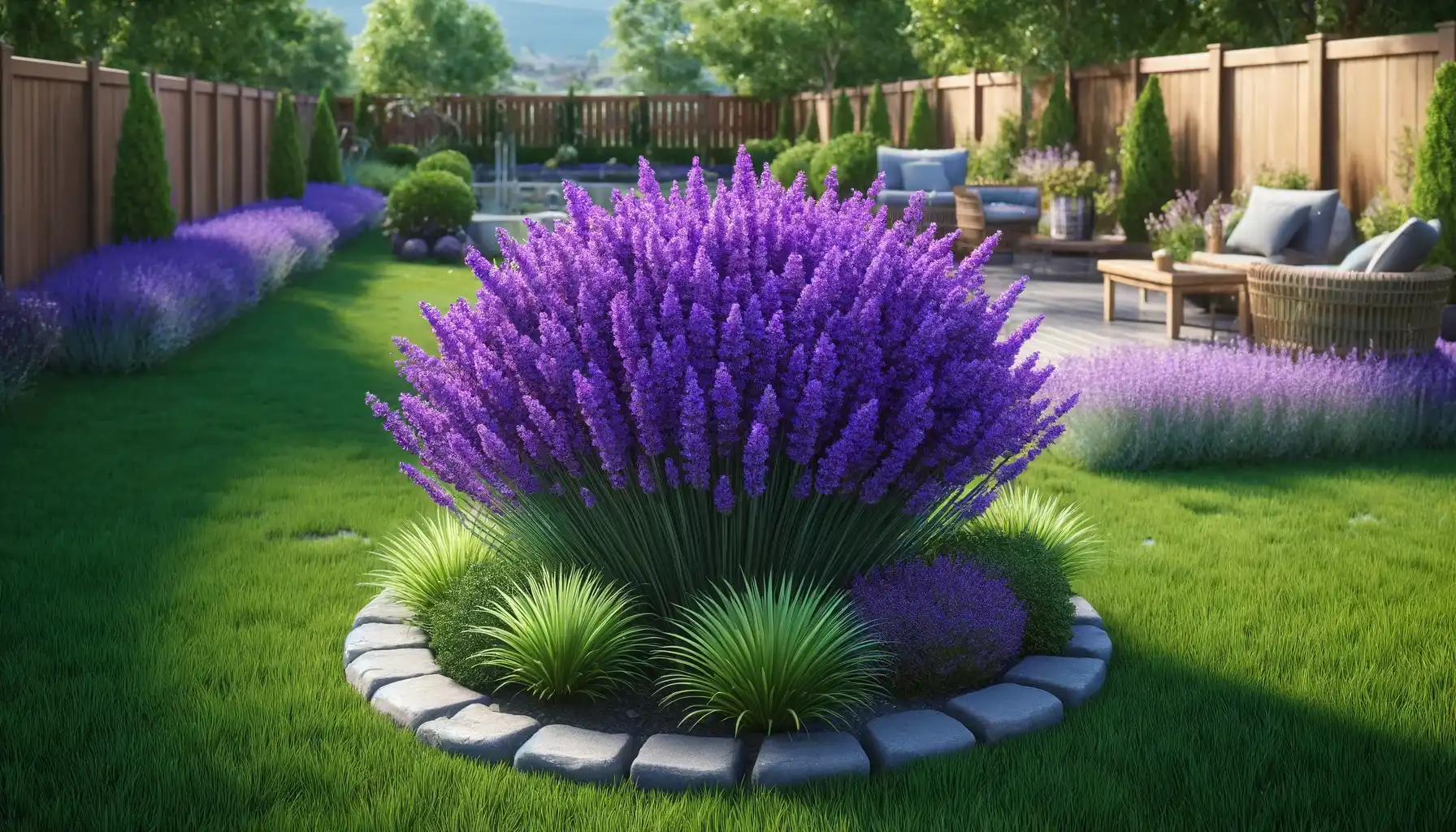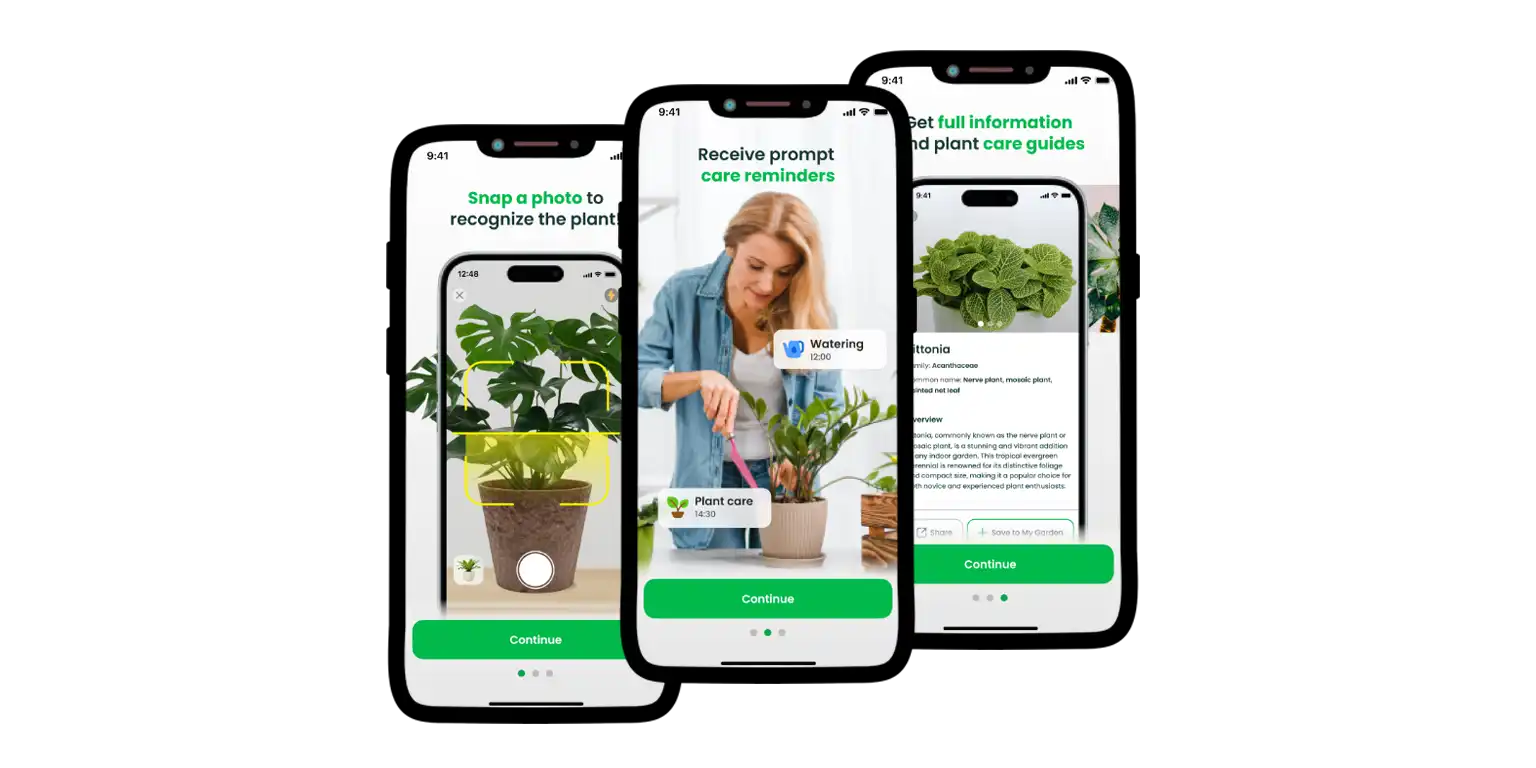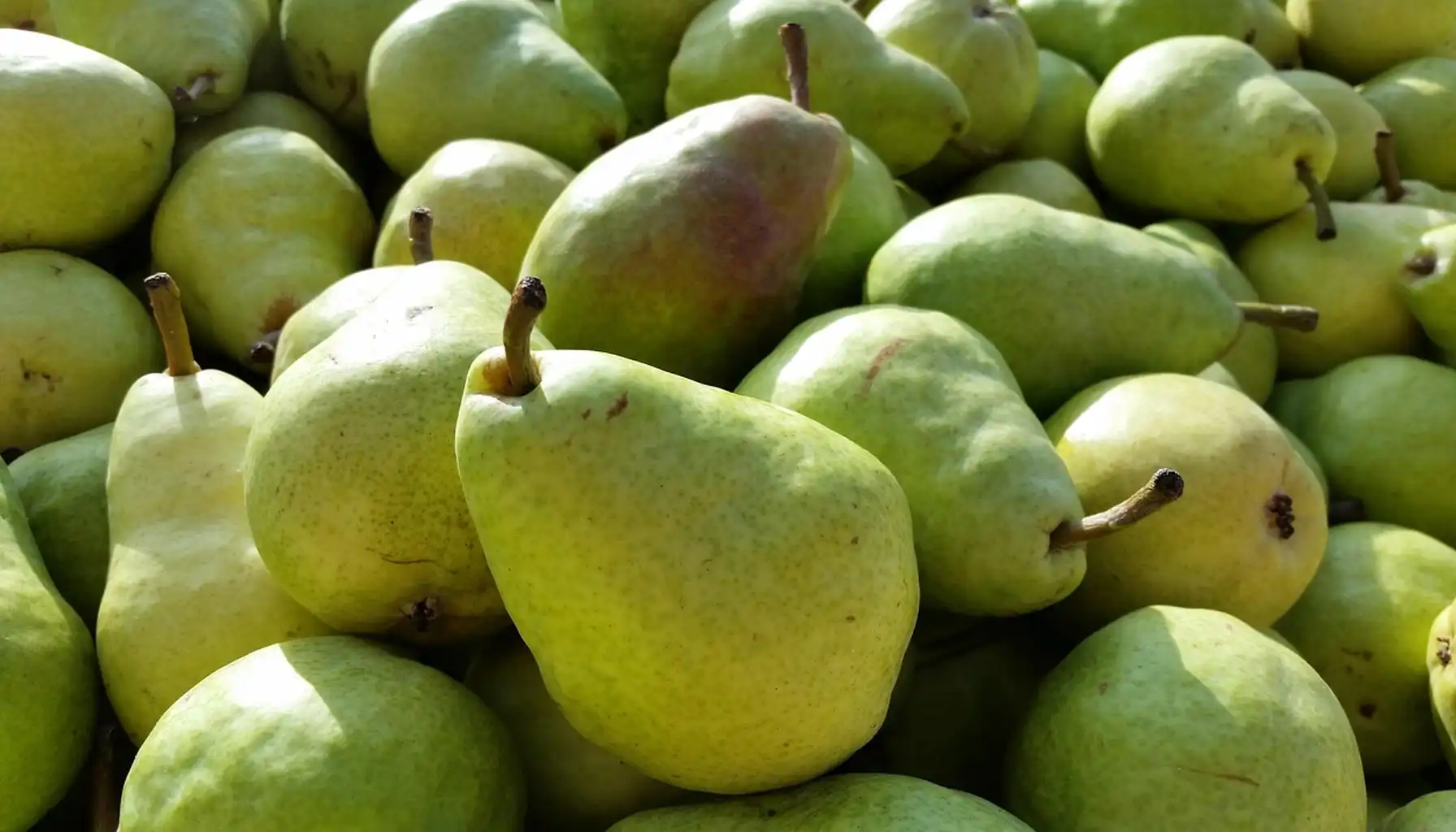Purple fields of lavender are like a fantasy in the real world where you can identify plant, a non-fictional vibrant scene plucked from the works of prominent poets, directors, and artists. Lavender plants delight, and introducing them into the garden may be an amusing experience for yard enthusiasts and spectators, too. Nevertheless, the process requires a bit more than true love and obsession, but dedication and patience in the first place.
So as to grow lavenders efficiently, one should be equipped with knowledge and a deep understanding of what these plants need. Does lavender bloom all summer? What do they need to stay healthy and vibrant for long? All you need to know about lavenders is here in our complete guide.
The Most Common Lavender Types
Lavenders, in essence, comprise a large group of plant species with different habitats, growing needs, and blooming seasons, yet united by the universal features, i.e., their appearance and magnificent fragrance. The vibrant spikes of lavender flowers produce an essential oil that is responsible for this magic scent that attracts pollinators and humans, as the latter used to implement it in medicine and perfumery artworks.
Do all Lavender plants flower? Indeed, all the lavender species flower vividly, though this is to happen depending on the natural resources of a particular type. Each plant has its own blooming pattern and habits, so let us explore some of the popular species one by one.
English Lavenders
One of the most popular options gardeners tend to select is the English lavender. These evergreen shrubs of silver-green foliage topped with long yet delicate purple spikes are a great addition to any garden, especially in relatively cool regions. With their blossoms in late spring to summer that last for 3-4 weeks, lavenders successfully attract bees, beetles, and other pollinators, which makes them a good companion plant in the yard.
French Lavenders
Another wonderful yet frequently underestimated instance of the lavender world is its French type. In general, the French lavenders represent a medium-sized plant of a group equipped with toothed leaves and densely packed flower tops, which manage to bloom in a bit more humid conditions starting in spring till the first frost hits. A resilient plant for a resilient plan.
Lavandin
As soon as the blooms of the English lavenders fade away, it is a Lavandin that enters the game and captivates observers with its striking appearance and seasonal preferences as well. Compared to its English “colleague”, the leaves of the Lavandin are much bigger, the spikes are longer and looser, and its growing conditions are generally hotter for these hybrids to flower more productively in the end.
By the way, what is quite unusual is that they remain attractive in winter, too! A great option for those who care about the charm of a garden all year round.
Spanish Lavenders
The Spanish Lavender is considered the early bird of the lavender group with fragrant leaves and tiny “pineapples” on the top. As its name suggests, the plant productively grows in hot climates with lower humidity levels, and, as a rule, the Spanish Lavender blooms repeatedly during the summertime.
Ideal Habitat and Growing Conditions
The beauty of lavenders is a product of the proper conditions that support the vitality of a plant and supply it with the energy to bloom. In most cases, lavenders thrive in environments that mimic their native Mediterranean habitat. Although the plant got so widespread and, hence, well-adapted these days, it still needs to meet some general requirements which are to be mentioned below.
Climate: The most appropriate climate, which somehow resembles one of the Mediterranean regions, presupposes mild winters and warm, relatively dry summers with low humidity levels at best. Lavenders do not usually need greater volumes of water, for they are seen as drought-tolerant plants, so overwatering may be detrimental.
Sunlight Exposure: One of the main aspects that affect the health of a plant is sunlight. Full sun is essential for lavenders since it provides a plant with a sufficient amount of energy so as to produce blooms and thrive.
Soil: The soil is a literally basic aspect to take into account when thinking about general lavender needs. For lavenders, the optimal soil option should be well-drained, sandy, or loamy with a neutral to slightly alkaline pH level of 6.5 to 7.5. Otherwise, the plant may not be able to absorb as much nutrients and water as needed and, hence, live shorter than originally expected.
Pests and Diseases: What May Affect the Lavender’s Health
Even though botanists call lavender a hardy and resilient plant, it can still be susceptible to certain pests and diseases, as all living beings can be. So, what are the major threats coming from the outside and affecting the plant’s health severely?
Among the majority of pests, the most popular lavender’s enemies are spittlebugs and whiteflies that feed on the lavender’s sap. Yet the damage is not severe, addressing such a problem may be time-consuming and daunting, too. Make sure you regularly inspect the plant’s foliage and flowers to take measures on time, if necessary.
Lavenders are usually arid-loving plants that cannot tolerate high humidity levels and overly moist soil. When exposed to such unpleasant conditions, there may appear complications, such as root rot, fungal leaf spots, shab, and other humid-related issues.
Growing Lavenders with Ease: Essential Tools to Use in The Garden
If one is interested in growing lavender in their own yard, it is always important to understand the essential tools that may make this experience a bit easier and more pleasant as well. In general, gardeners say that they need botany wit, plant knowledge, and practices in particular. However, there are many more instruments that should be prepared well in advance so as to cope with the newly emerging challenges promptly. So, what do you need in particular?
Gardening Tools: On every gardening occasion, one should be able to reach a garden trowel, pruning shears, forks, hand cultivators, and the like to manage the plant and the soil efficiently and more quickly. Besides, one always needs a watering can or drip irrigation system to provide a plant with water consistently. Nonetheless, there are a lot of things to optionally use on such a gardening journey.
A Smartphone Equipped with Plant Apps: Do you still wonder “Do Lavender plants flower all year?”. Perhaps, you cannot identify the problem of why your garden is suffering a lot. Everything out of your sight may be successfully managed with special platforms like AI Plant Finder.
These apps usually provide instant assistance, e.g., help one identify plants and diseases by one photo only, calculate how much water the plants need, detect the illuminance level of the surroundings, etc. If only this had been available before. Prompt assistance and collaboration with gardeners from all over the world are invaluable, so do not miss a chance to try it and share your experience with other enthusiasts in turn.
Lavenders are always pleasing to the eye, and incorporating them into private gardens is the primary goal of many plant lovers these days. Only when supported with relevant information and the right tools, one can simplify the process of growing lavenders and ensure that the plants receive the best care possible.
AI Plant Finder Related Posts:






